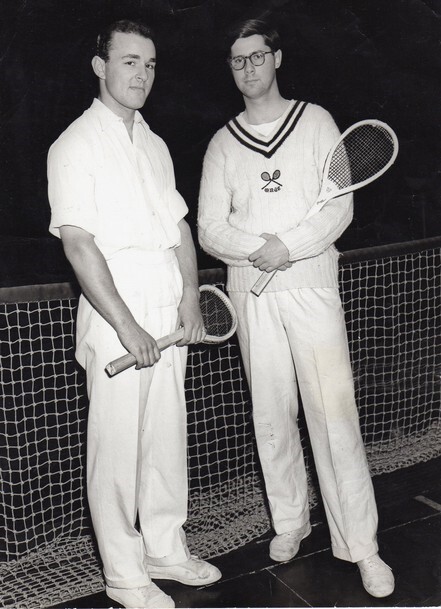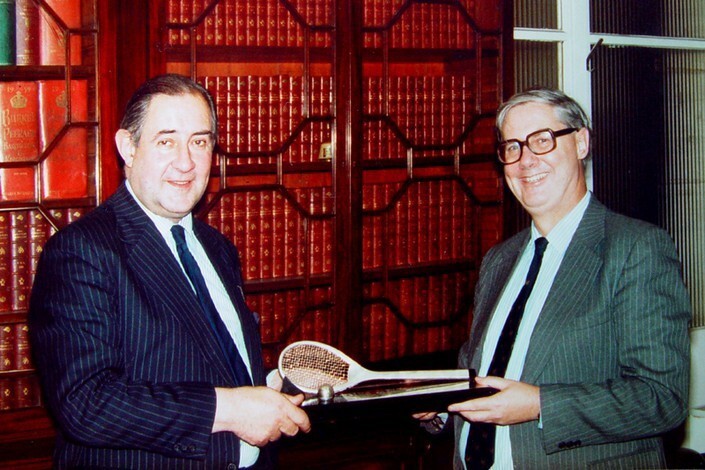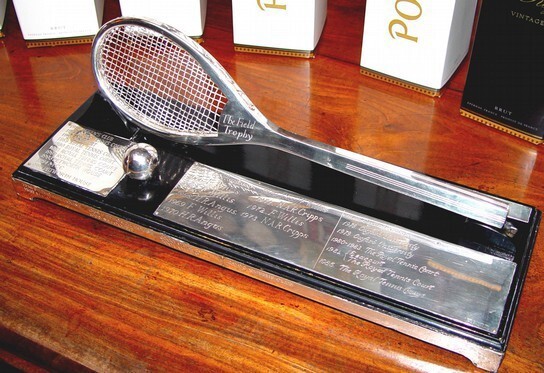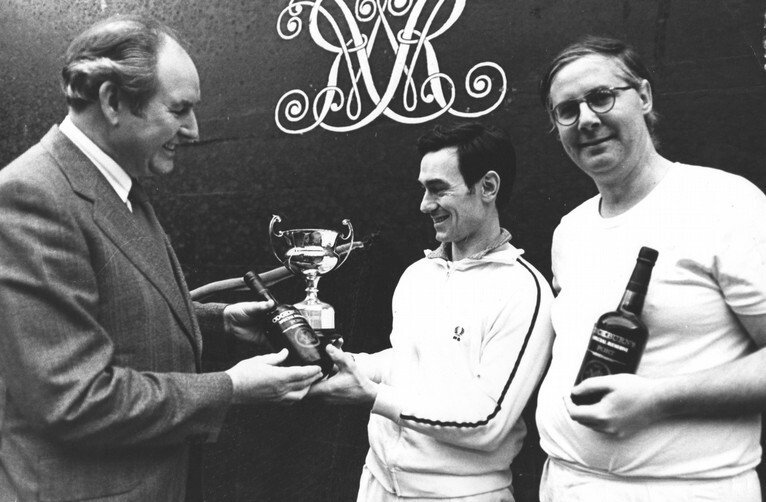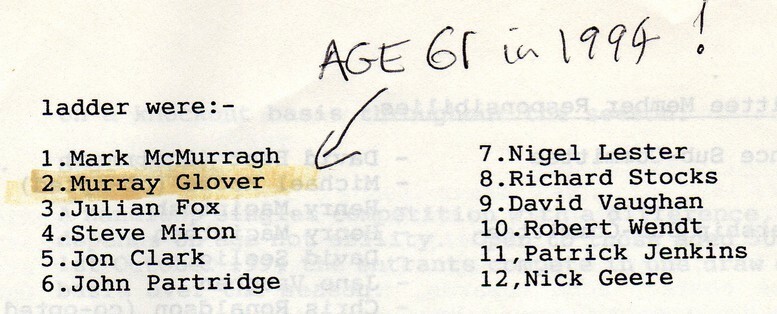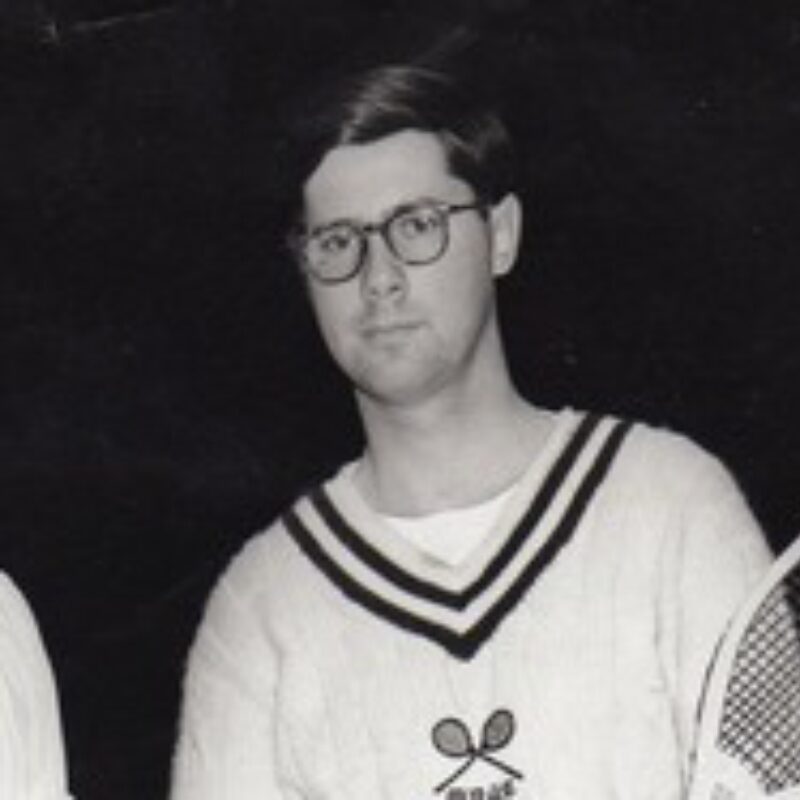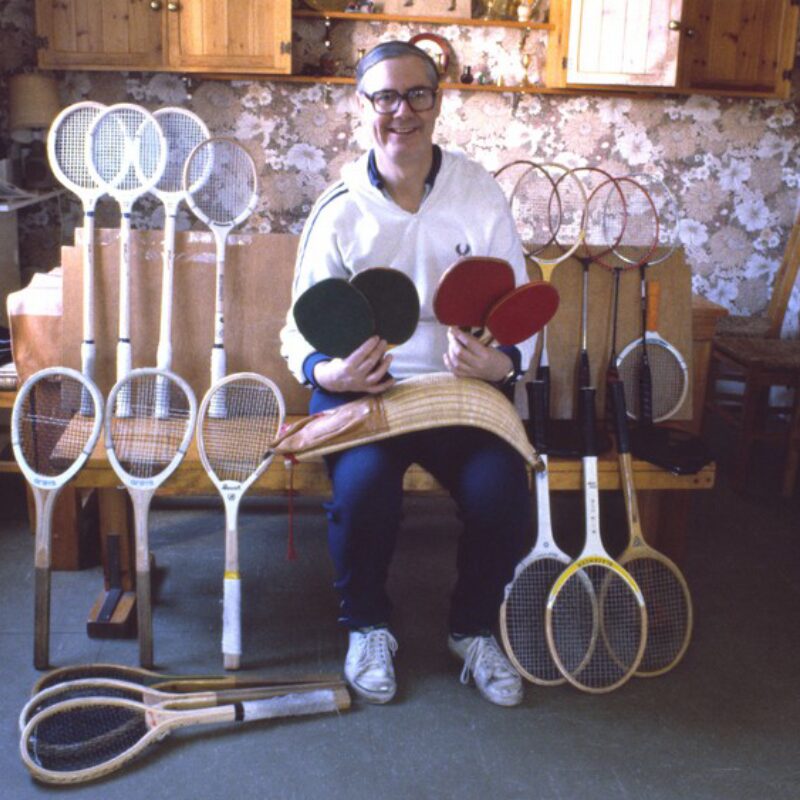Farewell to Murray Glover
Murray Glover, a highly accomplished Tennis player and long-standing member of the Royal Tennis Court and the T&RA, died last Friday night November 26 at the age of 88
Wellington
Old Wellingtonian, Murray Glover, a long-term friend of the T&RA, and a keen Rackets and Real Tennis player has passed away.
Murray's father, who had played in India in the army, had hoped his son would play Rackets at Wellington where he went in January 1947. However, to his and Murray’s great disappointment, his stuffy Anglesey tutor at that time, Claud Hughes-Games, would not allow any of his protégés to play the game before the age of 16. By the time Murray started to learn, from the wonderful Ronnie Hawes, his contemporaries were already fine players.
Oxford
After completing his National Service, Murray went up to Oxford in 1954. He had hoped to continue playing Rackets, but, since Oxford did not have its own court, took up the sister game, Real Tennis, at the historic court opposite Merton College. In those days there was no resident professional to teach students how to play; so one just picked the game up from those opponents. The Rackets professional from Radley, Ronnie Lay, would mend broken strings, but apart from that, players were on their own, having to clean the court regularly - sweeping damp tea-leaves over the floor with a very wide broom, and walking perilously round the inclined penthouse to brush the dust off. To clean the set of a hundred or so Tennis balls, they would shake them about in a large net with lots of chalk powder. Before long Murray was playing in the University team, and going to away matches in various courts around the country.
Murray’s first away match was against the Royal Tennis Court at Hampton Court. He lost fairly easily, not least because it was the largest court in the world, and Oxford, the only other one he had played on, was the smallest!
In 1956, Murray was a member of the combined Oxford and Cambridge side that contested the very first Van Alen Trophy match against the US Universities at Lords, winning his match as part of the overall victory. In 1958 he captained the Oxford side and, in the autumn of that year, went to New York with the combined Oxford/Cambridge team to defend the Van Alen Trophy, which they did successfully. Murray also played matches against various USA clubs - in Philadelphia, Boston, Long Island and Tuxedo Park. All in all, an amazing experience.
In 1958 Murray was recruited by Tony Negretti to join the Royal Tennis Court Club at Hampton Court, of which he was President.
Whilst never in the top rank of amateurs, Murray had a few successes over the years.
- In the early '80s he captained the RTC team which won the Field Trophy, for the inter-club championship, on several occasions.
- In 1976 he partnered Howard Angus to win the Cockburn Cup, the British Pro-Am championship.
- Around the same time he partnered Mike McMurrugh to win the Combined Services doubles at Queens.
- In the mid '80s he got to the semi-final of the British Over-50s singles twice, and the final of the doubles once, partnering Tony Crook.
- In January 1990 Murray damaged a sciatic nerve, playing in a match at Hatfield, which put him out of action for about a year, but in 1994, at the age of 61, he climbed to 2nd place on the RTC club ladder.
Royal Tennis Court
Tony Negretti, as mentioned above, recruited Murray to join RTC in 1958, when he was captain of the Oxford team. At that time the RTC annual subscription was £1, and for that, you could wear the handsome club tie with its crossed rackets and 15/30 motif. Whenever Tony played in away matches he would always sign up new RTC members.
One result of this was that, when Murray was appointed Hon. Secretary of the club in 1973 (after the so-called “Palace Revolution”) there were nearly 1,000 members. This number was reduced to 850 or so, when the full membership subscription was increased to £4, or £1 for “Friend of the Court” status.
It was Murray's job in those days to produce and send out the Club newsletter. It took him several days to hand-address all those envelopes and then lick 'n' stick the stamps, even with help from the family. After a couple of years, two kind fellow committee members, Michael Morton and James McNaghten, used to help him with the process. In recent times, Murray helped with the quarterly newsletter “stuffing” sessions admirably organized round the Club dining room table by David Seelig. He was very sad when ill health stopped him attending these convivial occasions from 2011 onwards.
The Secretary's job also included arranging all the 30 or so inter-club matches which took place every year. This required a huge amount of correspondence and telephoning - both to set up the fixtures, and, because it was before the handicap system had been introduced, to ensure that individual games were fairly evenly matched on the day.
Old Wellingtonian Real Tennis
In the 1960s and 70s Murray was also secretary of the Old Wellingtonian Real Tennis Club, and played in its Henry Leaf team. There were regular fixtures at many clubs around England, including Oxford and Cambridge, and weekend fixtures at Manchester. The home fixtures were played at Holyport. The star player back then was Andrew Windham, but there was a good pool of reasonable players to call on, including Hugh Norton, and fine Rackets players such as Colin Haycraft, and Oliver and Philip Case. He remembered Oliver once going on court at Petworth straight from an all-night party in London, while Philip's brilliant improvisations on the piano lit up many a post-match get-together. Other great enthusiasts included the irrepressible Michael Meyer, the greatest ever English translator of Ibsen, who used to play with Sir Ralph Richardson at Lords, and Christopher Malim, whose fingers had been frostbitten on Arctic convoys during WWII. And then there was larger-than-life Rupert Russell-Cobb, who, peering through his pebble-lensed glasses, drove his Mercedes so fast Murray declined lifts to matches thereafter. He even declined more firmly, when he once offered to fly him up to Manchester in his private plane! The OW team enjoyed a memorable weekend at the Paris club, and on the last evening were entertained to dinner, in his Paris house, by Frank Laws-Johnson. As a director of Mercier, Frank had laid on some very special wines for us, the star of which was a 1938 Chateau Margaux. Rupert's verdict, when asked his opinion was “Not a bad drop of Pepsi-Cola, Frank !” There was an icy silence, and within twenty minutes we were all shown the door.
Finale
After hip problems, Murray finally gave up playing Real Tennis in 2003, but carried on playing table tennis for his local club in the Thames Valley League. A stroke in 2011 put paid to all further sporting activity.
David Seelig adds...
“For many years, Murray and I played one another on Sunday mornings on the Rackets court at his alma mater. Despite the fact that he had not played the game since leaving school, he had such a superb eye for the ball that one would have expected to find that he had been playing continuously since that time.”
